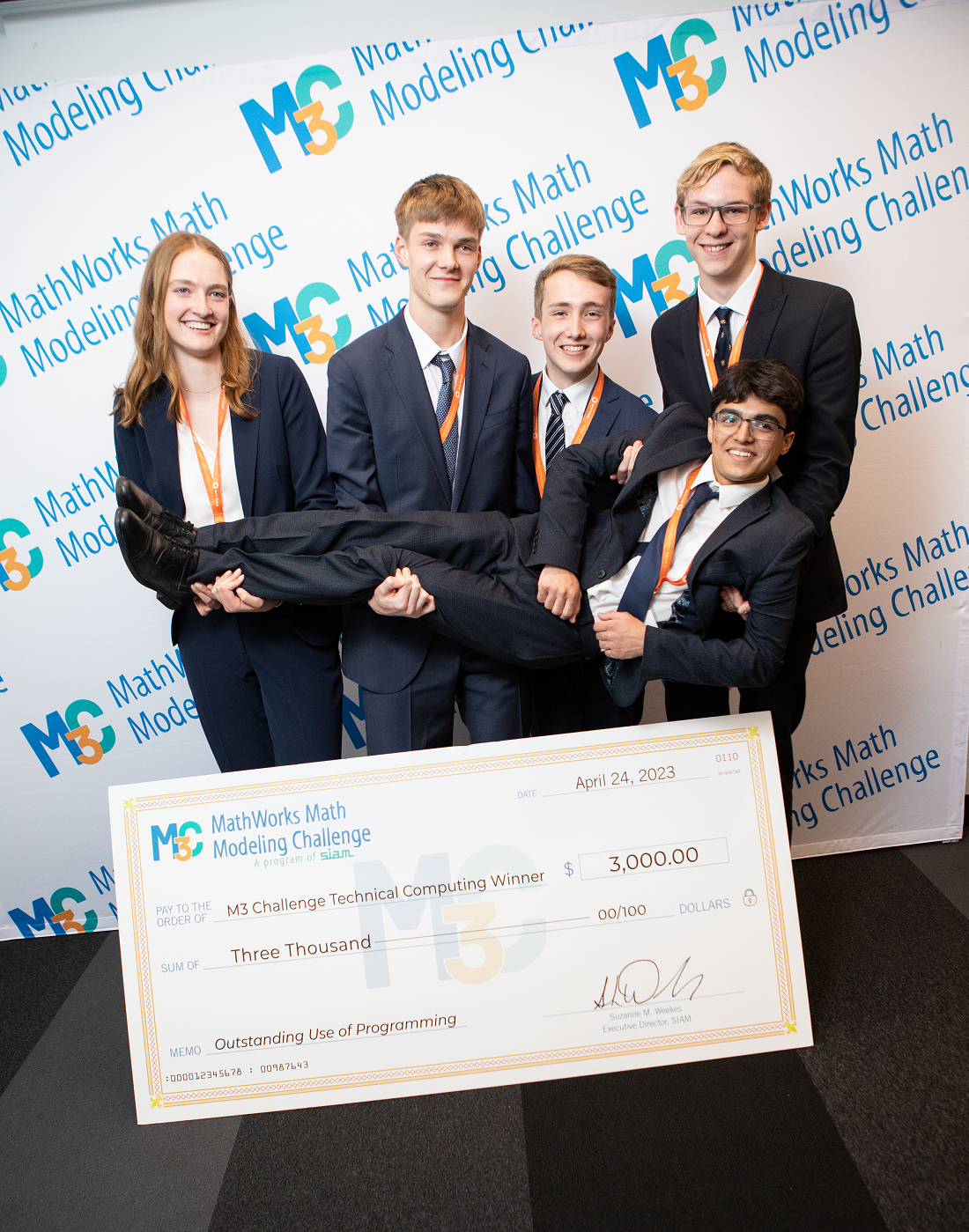
The Food and Agriculture Organization of the United Nations reports that approximately one third of all food produced in the world for human consumption every year goes uneaten1. As an example, perfectly good produce that is considered misshapen or otherwise unattractive2 is regularly discarded before reaching your grocery store shelves. The problem is even more pronounced in the United States, where the Environmental Protection Agency (EPA) estimates that more food reaches landfills and incinerators than any other single material in our trash3. Uneaten food also wastes resources (water, fertilizer, pesticides, land, etc.) used in food production. At the same time, it has been estimated that over 42 million Americans are food-insecure4 and could take advantage of all of this squandered food, frequently described as “wasted food.”
- Just eat it! —Create a mathematical model that a state could use to determine if it could feed its food-insecure population using the wasted food generated in that state. Demonstrate how your model works for Texas; you may choose to use provided data.
- Food foolish?—Personal choices when it comes to food consumption primarily occur at the grocery store, school cafeteria, restaurants, and at home. Create a mathematical model that can be used to determine the amount of food waste a household generates in a year based on their traits and habits. Demonstrate how your model works by evaluating it for the following households (provided data may be helpful):
- Single parent with a toddler, annual income of $20,500
- Family of four (two parents, two teenage children), annual income of $135,000
- Elderly couple, living on retirement, annual income of $55,000
- Single 23-year-old, annual income of $45,000
- Hunger Game Plan?—Communities are starting to recognize and address the opportunities associated with repurposing potentially wasted food. Think of a community that you belong to (your school, town, county, etc.) and use mathematical modeling to provide insight on which strategies they should adopt to repurpose the maximal amount of food at the minimum cost. In particular, quantify the costs and benefits associated with your strategies.
Your submission should include a one-page executive summary with your findings, followed by your solution paper—for a maximum of 20 pages. If you choose to write code as part of your work, please include it as an appendix—those pages will not count towards your 20 page limit.
Data Statement
Multiple agencies collect a wealth of data on a regular basis. A portion of this data has been compiled and provided. You are not required to use this data; that is, you may choose to use none, some, or all of this data and/or any additional data sources you may identify while working on this problem. Be sure to cite all resources used.
- This data may be useful for Question 1.
- The first tab has information about levels of food insecurity in TX.
- The second tab has information about food losses and waste in North America.
- The third tab has information about how much food is produced in TX.
- Data in these sheets was pulled from multiple sources, references to original data is prominent in each spreadsheet.
- This data may be helpful to gain insight on food choices that people make. These tabs provide total U.S. food expenditures, including purchases by consumers, governments, businesses, and nonprofit organizations in 2014.
- The first tab gives total dollar amount spent for food at home.
- The second tab gives the dollar amounts spent for food at home by different outlets.
- The third tab gives the total dollar amount spent for food away home.
- The fourth tab gives the dollar amounts spent for food away from home by different outlets.
- The fifth tab gives the food expenditures (at and away from home) by families and individuals as a share of disposable personal income .
- These tables were taken from larger sets found here.
- This data (from a survey of about 130,000 consumers) may be helpful to gain insight on choices (including those about food and many other expenditures) that people make.
- Statistics are provided that describe the sample population.
- The data is split among different income levels and provides average annual expenditures with standard deviations in a wide range of categories.
- This data was taken from here.
- You can generate similar tailored spreadsheets here. (Note: You may need a Java-enabled internet browser to generate spreadsheets. Do an internet search if you need assistance with finding a Java-enabled browser.)
- This data (from 2007-10 National Health and Nutrition Examination Surveys of 18,117 persons 1 year of age and older) may be helpful to gain insight on the amount of different food types that people eat.
- Food group types, as well as chosen units of measurement for each food type, are consistent with the USDA and US Health and Human Services publication, Dietary Guidelines for Americans 2010.
- This data was taken from here.
MATLAB Users:
MATLAB Users: If you are trying to use this data in MATLAB, you can import the data by double-clicking the files in MATLAB’s “Current Folder” browser or use the Import Data Button at the top of the Toolstrip. Here is a MATLAB video tutorial about importing spreadsheet data.
- http://www.fao.org/save-food/resources/keyfindings/en/
- https://www.azcentral.com/story/entertainment/dining/2017/12/13/ugly-fruit-and-veg-food-waste/923894001/
- https://www.epa.gov/sustainable-management-food/united-states-2030-food-loss-and-waste-reduction-goal
- Food insecurity refers to a lack of access, at times, to enough food for an active, healthy life for all household members and limited or uncertain availability of nutritionally adequate foods. Food insecurity may reflect a household’s need to make trade-offs between important basic needs. http://map.feedingamerica.org/
- http://www.refed.com/solutions?sort=economic-value-per-ton
Problem authors: Karen Bliss, Virginia Military Institute; Ben Galluzzo, Shippensburg University; and Katie Kavanagh, Clarkson University
Reference and other links included on this page were current and valid at time of original posting; if they are no longer valid or live please look for similar or updated links in context with the referenced topic.





